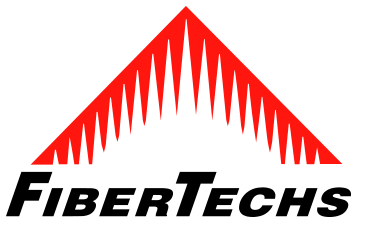FiberTechs provides quality, experienced fiber splicing services to customers in New Jersey, New York, Maryland, Delaware, Pennsylvania, and Virginia. We are part of the Corning Network of Preferred Installers (NPI), which means our fiber optic splicing contractors are Corning-certified and held to the highest standards in the industry.
Professional Fiber Splicing Services
Fiber splicing, the process of joining two fiber optic cables together, is an important service needed at every fiber location. It is a preferred solution when the available fiber optic cable is not sufficiently long enough for the required distance, or if an existing cable has broken. Whether you are installing a new fiber optic network or updating an existing one, cables must be properly spliced in order to avoid network outages, failures, or other disruptions.
FiberTechs can provide fiber splicing services in any environment as well as solutions to improve existing infrastructure. Important services related to fiber splicing include:
- Fiber Optic Termination – Termination is the connection of fiber or wire to a device, such as a wall outlet or equipment, which allows for connecting the cable to other cables or devices. Proper fiber optic termination will protect the fibers from dirt or damage while in use and prevent excessive loss of light, thus, making a network run more smoothly and efficiently.
- Fiber Optic Testing Services – We can test fiber optic cables to provide insight into their integrity, identifying any splices, connectors, or other components along the cable path. The constant evolution of high-speed optical fiber systems raises the level of testing, accuracy, and precision required on the fiber infrastructure to support these applications and services.
What is Fusion Splicing in Fiber Optics?
There are two methods of fiber splicing: mechanical and fusion.
- Mechanical Splicing involves aligning and joining two or more fibers together using connectors. Although quicker and easier to perform, mechanical splicing allows for more loss, so it is typically used for a temporary fix after a cable breaks.
- Fusion Splicing permanently fuses or welds the fibers together using an electric arc or heat. This is the preferred and most common method of fiber splicing, with the lowest loss and strongest connection between the two or more fibers.
How to Splice Fiber Optic Cable
Fusion splicing for fiber optic cables is an intricate process, and if not done correctly there can be connection issues or outages. The following steps are involved in a typical fusion splice:
- Stripping the fiber by removing the protective polymer coating.
- Cleaning the bare fiber with alcohol to ensure it is free of contaminants.
- Cleaving the fiber to create a clean break and allow for a better fuse.
- Fusing the fibers together using a fusion splicer, melting both ends to permanently weld them together.
- Protecting the newly fused fibers by reapplying the coating.
- Testing the new connection with an Optical Time Domain Reflectometer (OTDR) to make sure there is no loss or faults.
Our Fiber Optic Certifications
FiberTechs has relationships with and certifications from many fiber optics related companies and organizations including:
- Fiber Optics Association (FOA) – An international non-profit educational association that is chartered to promote professionalism in fiber optics through education, certification and standards.
- EXFO – A company that designs and manufactures test instruments and service assurance products for fixed and mobile telecom networks.
- Furukawa Electric Co., LTD. (FITEL) – Since manufacturing the world’s first optical fiber cable in 1974, Furukawa has led the development of optical fibers by establishing a total production system for products ranging from high-performance silica-based optical fibers to a variety of optical fiber cables.
- Credentials & Training
- Secure Worker Access Consortium (SWAC) – A cooperative program that delivers comprehensive identity verification, criminal history checks, and counter-terrorism screening services that validate the integrity of your workforce.
- Transportation Worker Identification Credential (TWIC) – This certification is required by the Maritime Transportation Security Act for workers who need access to secure areas of the nation’s maritime facilities/vessels.
- Occupational Safety and Health Administration (OSHA) – An organization whose mission is to assure safe and healthy working conditions for working men and women by setting and enforcing standards and by providing training, outreach, education and assistance
Contact Experienced Fiber Optic Splicing Contractors
FiberTechs is your first call partner for quality, reliable fiber splicing services, both inside and outside plant (OSP). We are proud to serve customers in New Jersey, New York, and the surrounding area including Maryland, Delaware, Pennsylvania, Connecticut, and Virginia. Contact us today to discuss your fiber optic or structured cable system project!
